Briefly discussed in this post: 11 books (Mohawk Interruptus; Two Cheers for Anarchism; Life on the Edge; Hood Feminism; S.C.U.M. Manifesto; Motherhood; The Rabbit Hutch; Animalia; Frantumaglia; A Heart That Works; and One Hundred Poems from the Chinese); 5 movies (Anatomy of a Fall; Red Rocket; Killers of the Flower Moon; May December; and Costa Brava, Lebanon); and 2 documentaries (Mister Organ; and Hell Camp).
Stay tuned for my “Reviews in Review” where I share the best and worst of what I read and viewed in 2023!
BOOKS
1. Simpson, Audra. Mohawk Interruptus: Political Life Across the Borders of Settler States (2014).
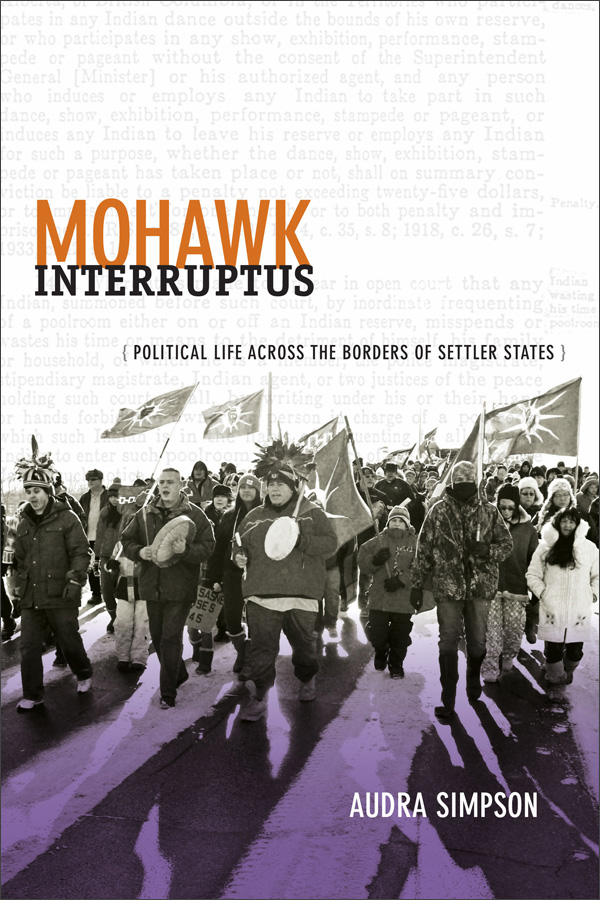
Like Glen Coulthard’s Red Skins, White Masks (2014) and Elizabeth Povinelli’s The Cunning of Recognition (2002), Audra Simpson writes a text that decimates settler colonial legal, anthropological, historical, and ethnographic definitions of “indigeneity,” and the ways in which they are deployed by settler colonies. While doing this, Simpson also complexifies simplistic colonial understandings of sovereignty, belonging, identity, territory, and classification. Rather than urging her compatriots to perform their indigeneity in a manner that earns the recognition of the nation state (or the United Nations via UNDRIP), Simpson develops a politics and an ethnography of refusal. This is much that is very rich here and I wish that more people would examine this Coulthard-Povinelli-Simpson nexus which carves out space for the complexities of being Indigenous after a few hundred years of colonization. Furthermore, in light of the recent and very heated conversations that occurred about Buffy Sainte-Marie’s claims about her indigeneity, I found Simpson’s conversation how how practices related to “blood quantum” and degrees of indigeneity developed, waxed and waned, at Kahnawá:ke depending on the specificities of then contemporary dynamics related to racial capitalism, trade, interstate politics, and heteronormative settler colonialism, to be absolutely fascinating. I have always viewed blood quantum through the Indian Act and the politics of erasure (where the system of measurement is designed to make it harder for each next generation to be defined as Indigenous so that, after a few generations, all Indigenous people have been disappeared). However, Simpson explains how blood quantum has been used by Indigenous people at times in order to try and protect what is left of Indigenous territories from Pretendians. These things are complicated (as the Buffy situation once again reminded all of us). Looking for a one-size-fits-all solution for who counts as “Indigenous” is a Eurocentric episteme. Which doesn’t mean that one must agree with every contradictory definition. It does mean learning the importance of when and how we agree and disagree with others, understanding why, what it’s worth, and what the consequences are.
2. Scott, James C. Two Cheers for Anarchism (2012).

I always assumed James C. Scott what an anarchist whose anarchism informed the areas he chose to study (cf. Domination and the Arts of Resistance [1990], Seeing Like a State [1998], The Art of Not Being Governed [2009], etc.). However, it turns out that he only converted to anarchism after studying in these areas and coming to the realization that the political theory and praxis that best described where he landed was anarchism. In that regard, he and I have ended up on a similar trajectory. I came to anarchism because I believe certain things about people, power, governance, oppression, and belonging, and when I first read the works of Kropotkin and Bukharin I realized, “hey, this describes what I believe.” In Two Cheers for Anarchism, Scott offers of a contemporary rendition of what Kropotkin does in some of his short, accessible essays: explains in a simple and compelling manner, why non-hierarchical ways of sharing life together with others are vastly superior to the hierarchical models that we currently live within and which are, in fact, annihilating us and most of life as we know it. I had a lot of fun reading this. It reminded me of how much I love this tradition and how much it has become the air I breath in everything I try to do. Recommended reading.
3. McFadden, Johnjoe and Jim Al-Khalili. Life on the Edge: The Coming of Age of Quantum Biology (2014).
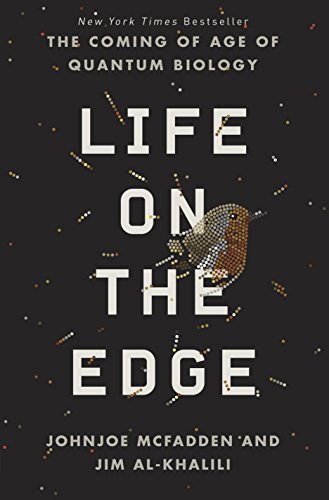
From gene-splicing to avian magnetoreception, to mammalian olfactory glands, to photosynthesis and the ATP cycle in mitochondria, Johnjoe McFadden and Jim Al-Khalili demonstrate how events occurring at the quantum level are fundamental to biological life. Their examples are interesting and accessible and the topic of quantum biology is, itself, completely fascinating (if a bit niche). From their research they conclude (or suggest, perhaps) that life qua life emerges precisely at the place where the quantum world meets the more massive world we know via classical physics. At the spot where quanta can escape observation and do all their wildly outrageous quantum things (tunneling, nonlocality, etc.) before they get pinned in place by an observer (which could be something as simple other components in a molecule), but where they also interact with elements of that pinned-in-place world, precisely here, McFadden and Al-Khalili argue, life emerges. It’s creative thesis and one that inspires curiosity, joy, and a desire to know more but in a way that leads one to be ever more deeply connected to the wonder of all that is. Fun times.
4. Kendall, Mikki. Hood Feminism: Notes from the Women that a Movement Forgot (2020).
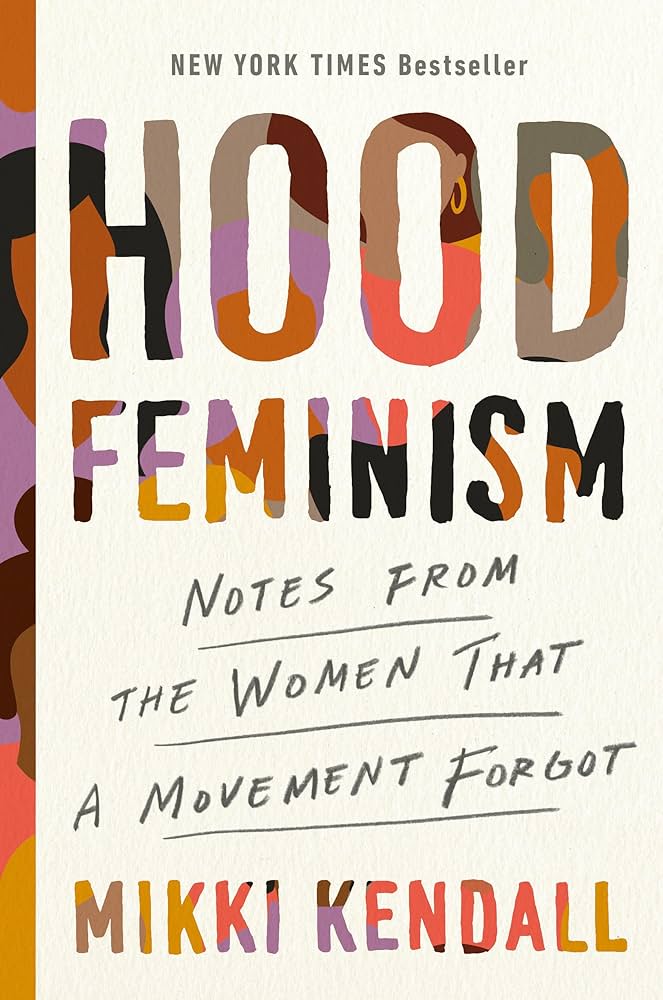
As with any movement that persists over time, Feminism is not and never has been, a single thing. Like other liberation movements that sought liberation for the oppressed and effected major reforms while becoming victims of their own rapid spread—there have ever-only been feminisms. Thus, for example, there is a significant and very important body of work from BIPOC cis- and trans-women, as well as gender-nonconforming folx, that criticizes “White Feminism” for the ways in which it reinforces hierarchies rooted in race and class while claiming to speak on behalf of all women. In fact, a lot of Black and Brown feminists push back on mainstream, White feminism (which, by the way, thoroughly infects the social service industry and other so-called caring professions), they do so largely through the rubric of race and/or setter colonialism. Mikki Kendall, without neglecting dynamics of race also centers class and speaks of matters that matter to impoverished Black women. Her essays are largely written in a journalistic manner and, for those already familiar with these matters, will read very quickly and easily. However, for those who are just entering into this area and who prefer this manner of writing, this is a good place to start.
5. Solanas, Valerie. S.C.U.M. Manifesto (1971 [1967]).
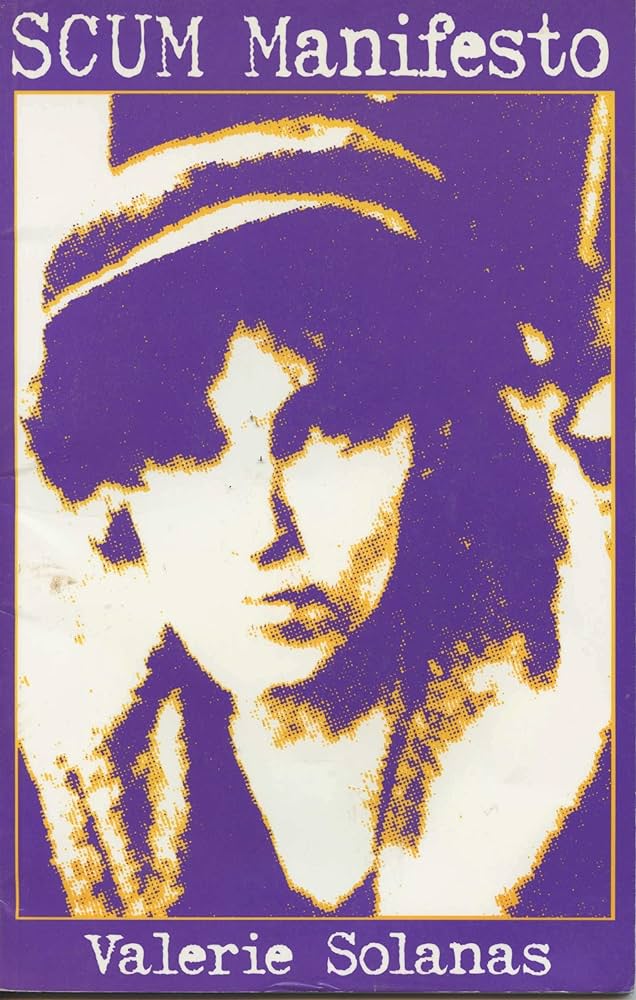
Many years ago, I stumbled across Valerie Solanas’ S.C.U.M. Manifesto (SCUM = Society for Cutting Up Men) but I had forgotten about it. Until my partner reminded me of it and I went back to read it again. It truly is a mixed work. The stuff about technology being our salvation is, of course, utter nonsense, but the stuff about men is so well done that I laughed out loud several times reading through it. Her takedown of misogyny, patriarchy, and the everyday assholery of everyday men is on point. Most of that is in the first half of her (short) work and it’s available online if you want to read it (see here: https://editions-ismael.com/wp-content/uploads/2019/05/1968-Valerie-Solanas-S.C.U.M.-Manifesto.pdf). Recommended.
6. Heti, Sheila. Motherhood (2018).

Sheila Heti is my favourite author I discovered, admittedly very late to the game, in 2023. Motherhood, is the book she wrote about not being or becoming a mother. It’s an exploration of what it means to be female-identified and approaching middle-age within our culture—which, despite all of the ways in which it attempts to present itself as post-patriarchy, is still very invested in the idea that girls grow up to be women who grew up to be mothers. Unlike her other work, parts of this one felt repetitive but, like her other works, every sentence, paragraph, and page of text is so well crafted that I became fully absorbed within it and believe I am a better person with words after reading than I was before. I very highly recommend anything by Heti.
7. Gunty, Tess. The Rabbit Hutch (2022).
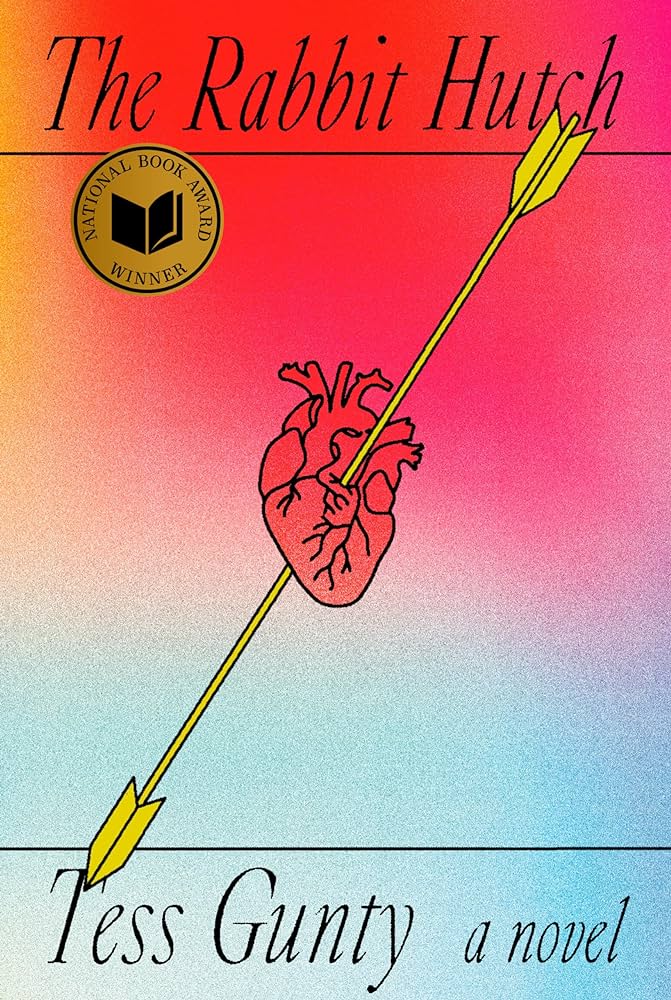
There are certain conventions that one becomes accustomed to when reading the kind of literature that both sells well and wins awards from critics in the USofA. Multiple authorial voices, reflecting the perspectives of different characters, a strong hook, the weaving of seemingly disparate threads into a single story, poignant reflections on themes that feel contemporary but not forced into the text, a preference for dialogue over long descriptive passages as the means by which one gains access to the environment of the characters, a plot that never loses sight of the hook or the ways in which the story builds to its climax and resolution and, essentially, the ways in which conventions are expertly respected and transgressed. Tess Gunty does all of these things well in The Rabbit Hutch but what sets her apart from, say, Jonathan Franzen (who can do all of these things in his sleep but who writes stories that put me to sleep), is that she brings a perspective to her storytelling that wanders within the madness and mysticism of those who have been offered nothing but the profane and have found the sacred therein, or thereout, or within themselves, or somewhere at least. I enjoyed this debut novel from start to finish and look forward to whatever Gunty writes next.
8. Del Amo, Jean-Baptiste. Animalia (2019 [2016]).
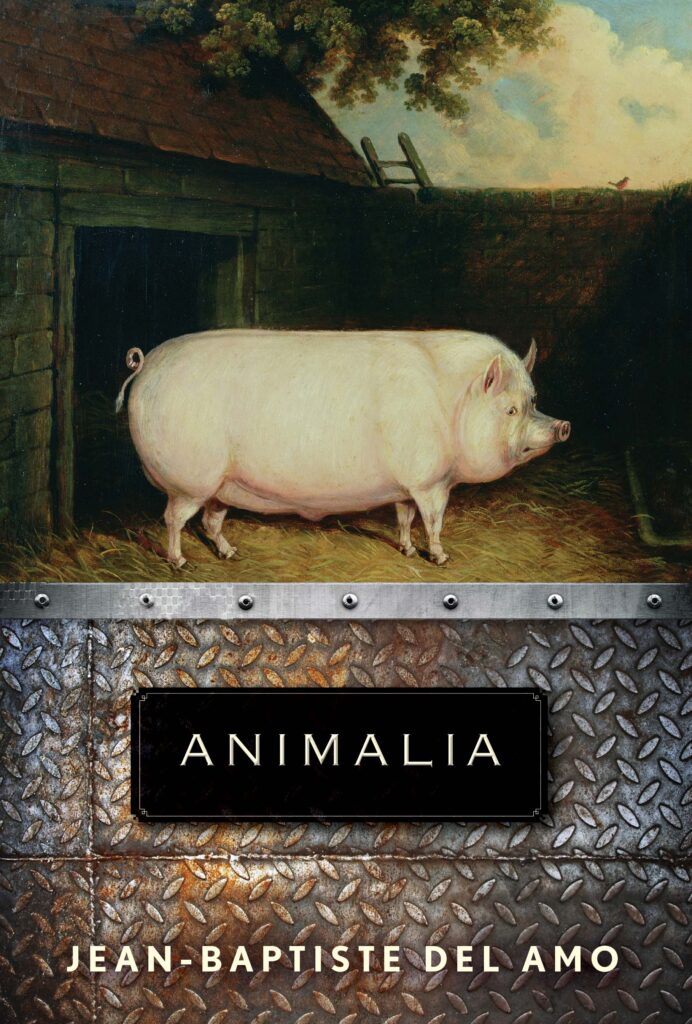
If you want to read a book about pigs and people shitting and pissing and rolling in the mud and the nights are dark and the winter is cold and pigs and people shit and piss in the winter and shit and piss in the night and shit and piss in the mud and maybe people are pigs or actually worse than pigs and everything is cold and darkness and mud and piss and shit, then do I have a book for you! It’s this one! Think Cormac McCarthy meets Lucile Hadžihalilović in a multi-generation family of French pig farmers. Not my jam these days.
9. Ferrante, Elena. Frantumaglia: A Writer’s Journey (2016).
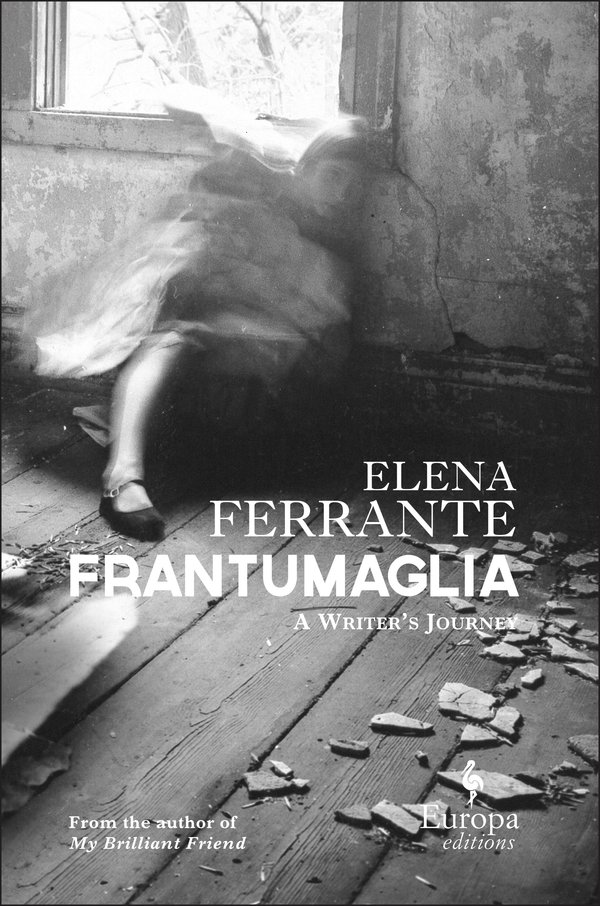
Elena Ferrante is definitely my jam these days! Frantumaglia is a collection of interviews with Ferrante and a few other more essayistic pieces she wrote. They focus heavily on her earlier work but, because the collection is Ferrante’s reflections on writing, gender, class, Naples, and life in general, it’s captivating, makes my brain think all kinds of creative things, and well-worth-reading just as an example of good writing. Recommended reading. But read all her stories first because they are fantastic!
10. Delaney, Rob. A Heart That Works (2022).

I knew nothing about Rob Delaney or the shows he has co-written or starred in, but this memoir about surviving the death of his infant son got rave reviews somewhere (I forget where) and so I picked it up when it was on sale. Holy eff, it hits like a mule kick to the heart. Also, reading a deeply loving, intimately human, profoundly heart-breaking story of one child’s death and the impact that has on that child’s parents, while Israel is absolutely slaughtering thousands of Palestinian children while the world stands by and does nothing is a profoundly disorienting experiencing. Delaney has written the kind of text that every child who dies deserves to have written about them. It’s a staggering work of love and I am grateful for it. And I don’t know how to cope well with a world wherein Rob Delaney, Hollywood actor and writer, has the ability to speak this for us, while 1.9 million forcibly displaced people in Gaza, parents and grandparents and siblings and cousins and uncles and aunts, don’t. Oof.
11. Rexroth, Kenneth. One Hundred Poems from the Chinese (1971).
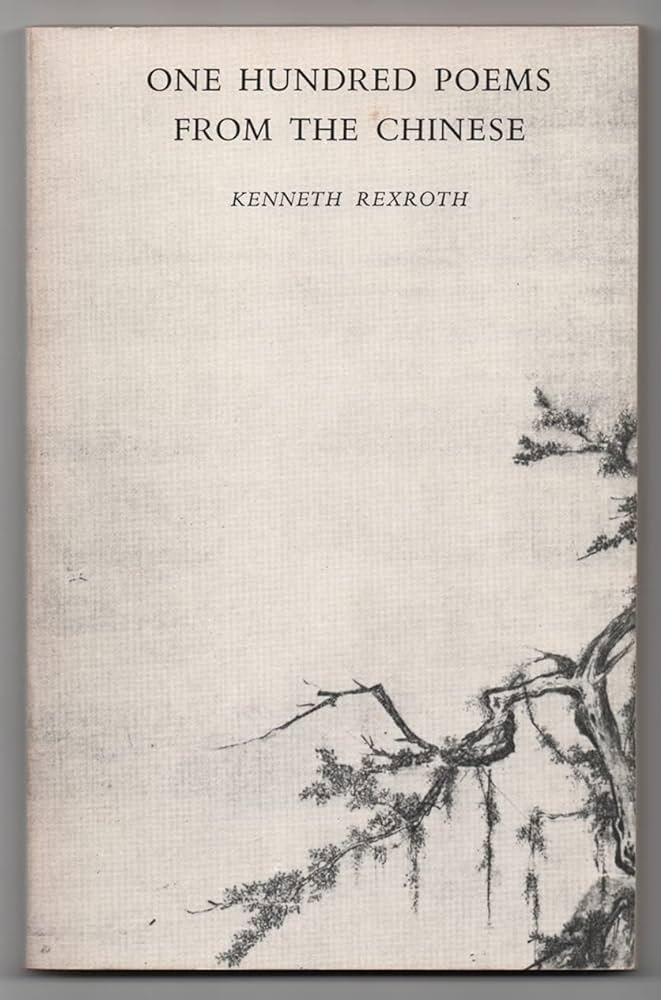
There are more than one hundred
Poems here
But counting poems is foolish
Like attempting to count dewdrops
On the misted feathers of roosting
Cranes by the ferryman’s boat
Or recalling the years spent drinking
With my best friend
When our children were young
And we were too
Before we believed in dying
Like poems
In translation
MOVIES
1. Triet, Justine. Anatomy of a Fall (2023).
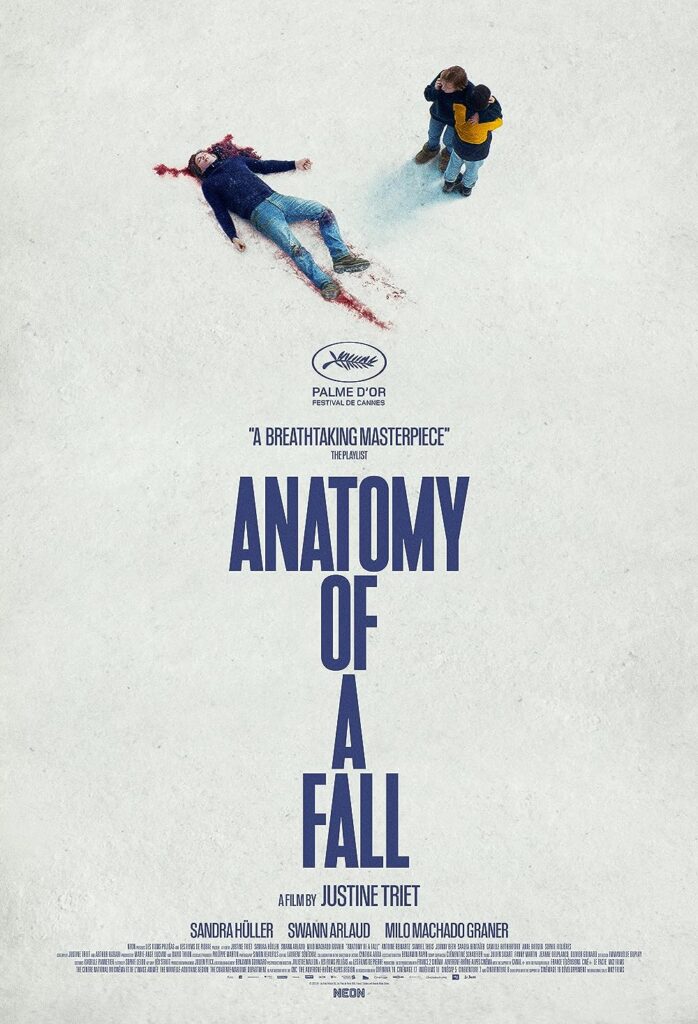
The 2023 Palme D’Or winner at Cannes, Justine Triet’s Anatomy of a Fall is a family court drama that I almost didn’t watch because I don’t usually watch family court dramas, but I’m very glad I did. Sandra Hüller receives a great deal of well-deserved praise for her portrayal of the protagonist who also is called Sandra in the film and, in fact, her husband in the film, Samuel, is played by Samuel Theis (a fun little device deployed by Triet). However, for me, what makes this film, is the character of Daniel (played by Milo Machado Graner). I think affective heart of this film is how the child, Daniel, suffers abandonment, loss, and the sometimes accidental, sometimes cultivated flaws and petty cruelties of his parents. It’s a helluva performance that any child of less-than-perfect parents will understand at an existential level. It reminded me of Andrey Zvyagintsev’s Loveless (2017; one of my favourite Russian movies by one of my favourite Russian directors). There’s something here about what any child goes through as they are forced to reckon with the world, not as it should be, not as they desire it to be, but as it actually is, not ontologically, but historically, politically, contextually, here and now, what is given, what is taken, and what remains. Recommended viewing.
2. Baker, Sean. Red Rocket (2021).
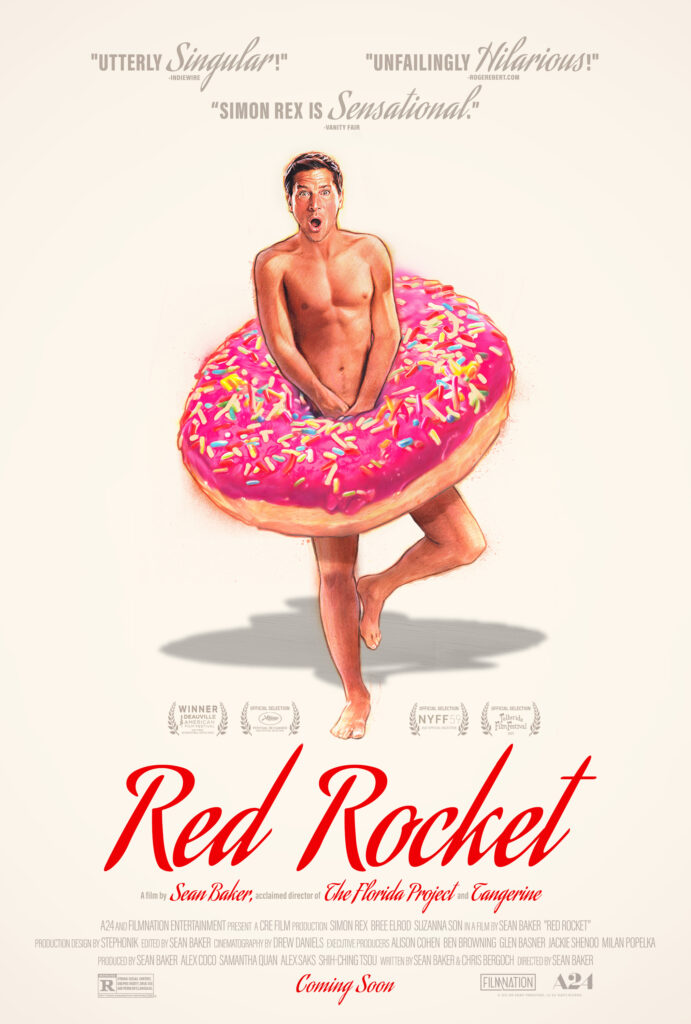
Sean Baker is one of my all-time, favourite American moviemakers. Starlet (2012) and Tangerine (2015) were both top-notch. The Florida Project (2017) was even better than top-notch. So I brought very high expectations to my viewing of Red Rocket—a movie about an aging male porn star who returns to his impoverished Texas oil town to try and reconnect with/freeload off of his ex and her mom, while also trying to still live his fantasy of being an unstoppable sexual force by attempting to seduce a teen who works at the local donut shop—and it met my expectations. As with Baker’s previous films, it’s located in the a little pocket of devastation (which, when you add them all up, equals America) and it uses non-actors or people with very limited acting experience and very relevant life experience (the male lead did, in fact, do porn in the ‘90s). This produces excellent results. In a way, Baker’s work reminds me of P. T. Anderson’s early (and best) trio of films: Boogie Nights (1997), Magnolia (1999), and Punch Drunk Love (2001), but while Anderson is a near-perfect story teller in all the clever ways that clever people create characters, use extended shots, weave disparate plotlines together, slowly build to a climax, in order to create a masterful work of art, Baker has a sneaky way of drawing out similar feelings in viewers in ways that feel more life Real LifeTM (it’s sneaky because, of course, these are very well-crafted films and not, in fact, Real LifeTM). Anderson is a bit more cerebral in his structure. Baker is a bit more affective. Both are exceptional and I suggest you watch this film and everything else Baker has directed.
3. Scorsese, Martin. Killers of the Flower Moon (2023).

I read a bunch of reviews of Killers of the Flower Moon—both from respected mainstream critics and from various Indigenous voices (both Osage and not Osage, scholarly and not scholarly, involved in the film industry and not involved in the film industry)—before I watched this movie. If a film is 3.5hrs long, I want to make sure I’m interested enough in it to put in that kind of time. Then, after I watched the film, I went back and reread what the various reviewers had said. I think the Indigenous criticisms of it are solid—and understated. When White people make movies starring White people that are supposed to be movies about Indigenous people and White people getting woke to what they did or did not do to Indigenous peoples, all too often what you get is a subtle reaffirmation of White supremacy. Let me explain.
Historicity, politics, and intersectionality aside (for just one moment), from a literary critical perspective, there is one massive plot gap in Scorsese’s story. Why does Mollie Kyle—played brilliantly by Lily Gladstone, although after the first hour she becomes a second thought an mostly a prop and background feature as, in fact, happens to most of the Indigenous people and their perspective after the first third of the film—why does she not only fall in love with Ernest Burkhart (Leonardo DiCaprio’s character) but stay in love with him? The viewer is at a loss. The character of Ernest, as seen from Mollie’s perspective, doesn’t have any attractive or redeeming qualities. Even before it becomes clear that he’s busy murdering Mollie’s family to get their oil money. Again, from Mollie’s perspective as a character in the film, I can’t think of a single reason why she would not just marry but actually love Ernest (as she so clearly does in the film). Attached to this plot gap is an absence of Osage men. Where are the Osage men? There’s one fellow that Ernest’s uncle, William “King” Hale (Robert DeNiro’s arch-villain), is plying with alcohol who actually married Mollie when they were teens and then are there are men who show up when the Osage have council meetings and, in the latter portion of the film, a young fellow who supports the FBI agent in tracking down Ernest (this young Indigenous fellow feels very much bombed into the story with little explanation of why he’s there other than, perhaps, to make Scorsese feel like he’s getting more Indigenous peeps on screen since so much of the story is so White-dominated after the first hour). But where are the day-to-day Osage men? Where are the men who are Mollie’s age? They don’t seem to exist. Like the mythical “disappearing Indian” so-loved in the White supremacist story about the “founding of America,” they seem to have vanished.
White people are the default option because in such a terra nullius, with no Osage men to be found, I guess it makes sense to marry a White dude. But there’s more going on here than this. Because Ernest isn’t just played by some whatever actor. He’s played by one of the most-loved, most-exciting-to-watch actors in Hollywood. He’s played by someone we love watching—someone we want to love no matter what he does (see also Leo’s portrayal of Jordan Belfort in The Wolf of Wall Street [2013] or of Calvin Candie in Django Unchained [2012]). Which begs the question: how does Scorsese want the viewer to feel about Ernest? It seems to me that Scorsese wants us to be emotionally-invested in Ernest. He is, after all, the protagonist. As such, he has the most screen time, the fullest backstory, the most filled-out character, the greatest degree of moral complexity (i.e. he’s not all good and he’s not all bad… he’s the most human person in the film). Okay, so the Osage are mostly background characters to be robbed and bumped-off, and the focus of the film (especially the later two thirds, which, may I remind you, still counts for more than 2hrs of screentime) is really on the Whites, especially Ernest, who we want to like (we love watching Leo do roles like these, he’s so good at them!), even if we also feel some sense of relief, as if we have not only purged an evil from among us but from within our own hearts, too, when he is finally forced to reckon with his deeds (here through the steadfast work of the FBI and the American legal system which, as many Osage and other Indigenous reviewers have noted, are actually forces that have been continually, overwhelmingly, and lethally deployed against Indigenous folx, including through the very system of “headrights” given to the Osage in order to take oil from the land to which the Osage belonged, now transformed into private property exploited by oil barons—oil barons, who, it should be noted, are also strikingly absent from the film as is any in-depth understanding of how genocidal setter colonialism created this whole mess, brought it into existence, and continued on afterwards up until our present day).
But back to Ernest. Ernest is an entirely unlikeable villain played by an actor we entirely like to watch in any kind of role at all (and Scorsese himself has put DiCaprio into six of those roles!). But, other than venting some kind of jouissance related to repressed White supremacist fantasies about killing Indigenous folks, other than the way in which the film is structured to make viewers like Ernest (and where Scorsese focuses the gaze of the viewer could be examined as a case study pertaining to racism not as a subjective, personal thing, but as on objective, structural thing), where in the story itself is the viewer given a reason to feel okay about this? Well, this is where the fact that Mollie loves Ernest so well, without any basis or justification at all, becomes relevant. Mollie’s love for Ernest is that which makes the viewer feel okay about liking him, too. If even the Indigenous women whose family Ernest is murdering and who Ernest claims to love while slowly trying to kill her, if even she can love Ernest, that surely we can be excused for liking him. He’s not all bad.
And, in fact, this is the broader point that White viewers receive from watching Killers of the Flower Moon. We’re not all bad. The very fact that we are able to watch a film like this and reckon with our colonial past or the violence of our predecessors, is experienced as evidence of our moral superiority to those predecessors in the present. We don’t deny this violence. We admit that there were some real scumbags (like Ernest and King and the petty bureaucrats and small-town guardians of public health and law and order), but they were called to account and American JusticeTM prevailed, even though it could not (and did not want to) bring back the dead or give back things that were taken (like life, like land).
In this portrayal of Ernest, as well as in the way this portrayal encourages the White viewer to feel as a viewer, I am reminded of the following quotation from Žižek’s In Defense of Lost Causes. While discussing Cold War era spy thrillers, Žižek makes the following remark about how the characters are portrayed:
In contrast to the simplistic opposition of good guys and bad guys, spy thrillers with artistic pretensions display all the “realistic psychological complexity” of the characters from “our” side. Far from signaling a balanced view, however, this “honest” acknowledgement of our own “dark side” stands for its very opposite, for the hidden assertion of our supremacy: we are “psychologically complex,” full of doubts, while the opponents are one dimensional fanatical killing machines.
The critical point here is that moral complexity and the presence of a “dark side” is taken as a “hidden assertion of our supremacy,” over against “one-dimensional” portrayals of others. In Killers of the Flower Moon, the Osage are not portrayed as “bad guys” or “fanatical killing machines” but they are one-dimensional (disappearing and dying) and, more to the point, largely absent (characters with little to no screentime cannot be nearly as multi-faceted as those who are the focus of director’s camera and the audience members’ gaze). Ernest, as I already mentioned, is complex and, admittedly has a dark side, and the same is true of the White audience members who go to watch Killers of the Flower Moon, in part, to reckon with their own “dark side” (i.e. the history, however redacted and truncated, of genocidal settler colonialism). In fact, it seems to me, this movie, made by a White director (well known for his anti-Blackness, starring White actors, and viewed primarily by a White audience (fans of Scorsese are overwhelmingly White and, it should be recalled, Scorsese’s earlier movies are consistently anti-Black), is engaging in precisely the kind of hidden assertion of supremacy (in this case, White, settler supremacy) that Žižek identifies. The moral complexity granted to Ernest and assumed by the audience is that which the audience member can take as evidence of their superiority and to the rightfulness of their claim to be the possessor of this land, their privilege, and justice. Ernest, even though he is a villain, ain’t all bad. And neither am I. In fact, I’m much better than Ernest because I can honestly reckon with the past that he embodies and, therefore, can use that as evidence that I am not free of his flaws. God bless America!
4. Haynes, Todd. May December (2023).
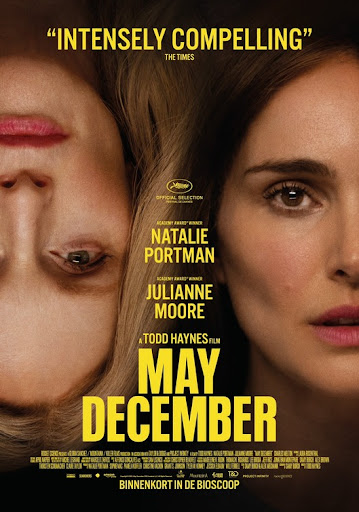
Come December, I always look over lists the critics compile of the best films to be released over the last year. May December was one of the films that showed up in a lot of different lists for 2023. So I watched it. I wish I didn’t. There were so many things I disliked about this movie that I’m not even sure where to start or if I want to bother (spoiler: I don’t want to bother). Suffice to say, this is not the film you want to watch if you want to watch a movie about grooming, childhood sexual abuse, and how some people who are abused as children end up in supposedly loving relationships with people who continue to abuse them as adults. But, you know, given Natalie Portman’s ongoing support for the IOF and the genocide they are enacting in Palestine, it’s not altogether surprising that she plays a child-abusing sex offender so very well. Fucking ew.
5. Akl, Mounia. Costa Brava, Lebanon (2022).
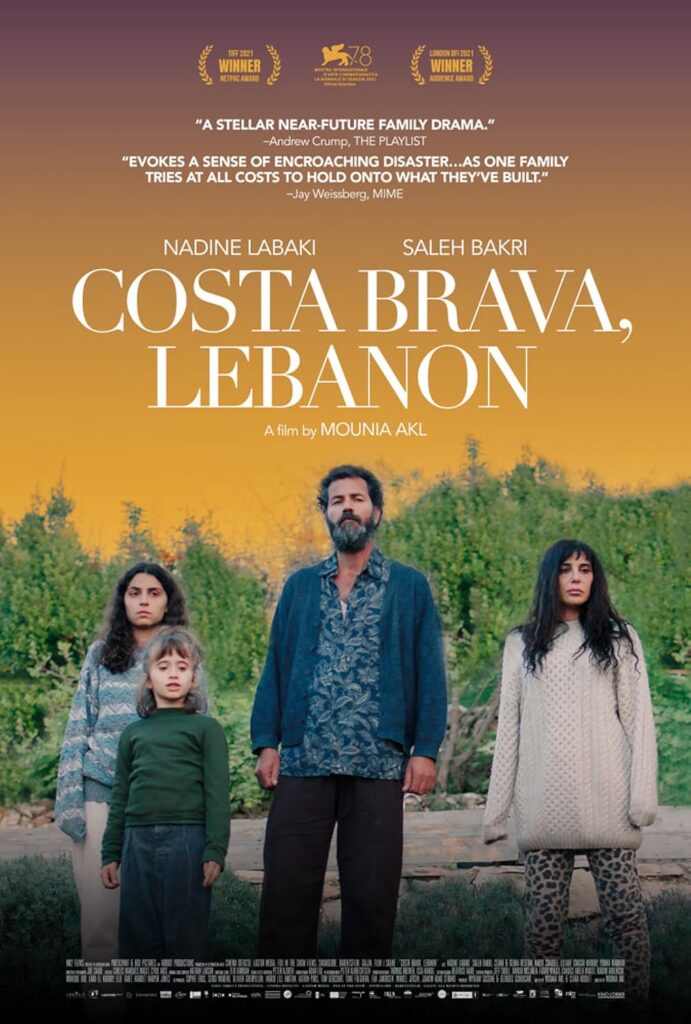
Nadine Labaki’s Capernaum (2018) made me an instant fan of Labaki and also made me interested in watching more Lebanese films. So when I saw that Mounia Akl’s Costa Brava, Lebanon, was getting solid reviews and that it also starred Labaki as the co-lead, I knew I was going to watch it. I’m glad I did. It’s a slow roast about one family trying to find it’s way after the fleeing Beirut after the initial success and then defeat of the Arab Spring, after the port explosion, and after massive pollution and (perhaps) some kind of dystopian ecological collapse. They go to the hills and have their own land and home there which is all too soon disturbed when the government decides to start a garbage dump next to their property. Each character is well-developed and very well acted. The gender dynamics of a (loving but patriarchal) patriarch living with his mother, his wife, his teen daughter, and his much younger daughter are ever-present but are more of an environmental feature than something stated explicitly. Which actually makes the film very rich. Beyond the characters, which are the heart of the movie, imo, there is the question of where we might be able to go, in this world of globalised neoliberalism, neo-fascist authoritarian governments, and ecocide, that allows us to experience freedom, beauty, tenderness, and rest. Perhaps, the film suggests, we can experience those things for a moment here and there. But those moments are fleeting. We should immerse ourselves wholeheartedly when they arrive. But not become so attached to them that we are annihilated when they depart (as they will before too long). In this way, perhaps we can love each other well enough to get through all of this everything.
DOCUMENTARIES
1. Farrier, David. Mister Organ (2022).
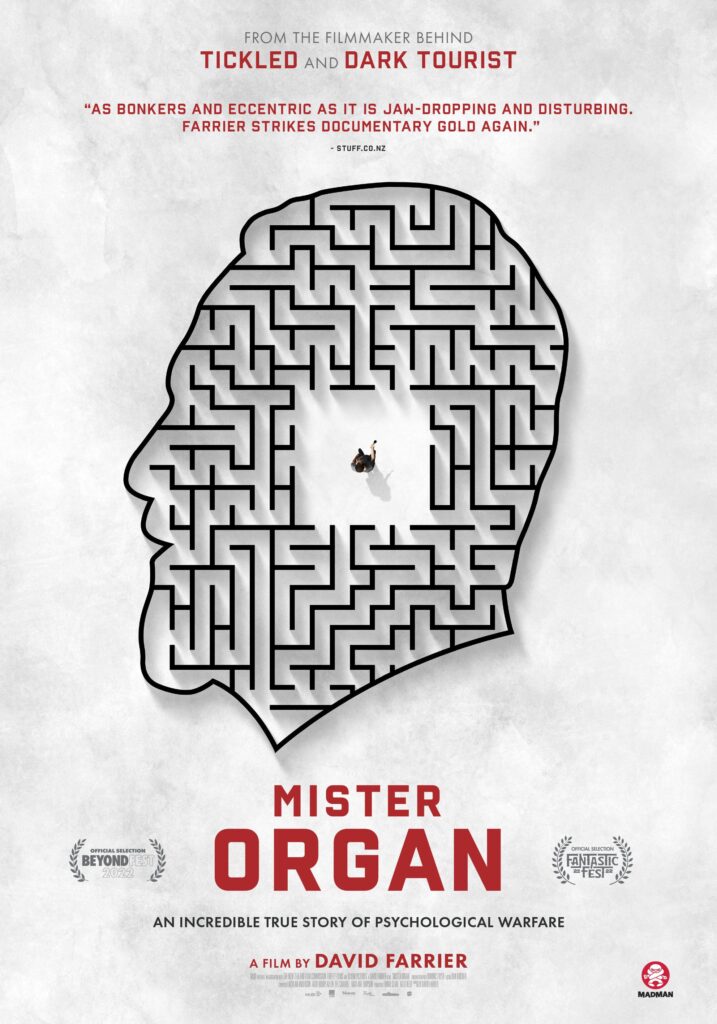
David Farrier digs up some strange and discomfiting shit in his documentaries. Tickled (2016) began as an exploration of what seemed like a very funny and outrageous premise (the discovery of a “competitive tickling” league) but ended-up accidentally exposing a millionaire who was sexually-and-financially-exploiting young men. That doc definitely put Farrier on my radar and it also prompted many people to send Farrier suggestions for other shocking-and-kinda-dark topics. This resulted in his Dark Tourist [2018] series on Netflix which doesn’t bring much of a critical lens to people who go to visit death-and-disaster-related locations for some kind of voyeuristic thrill—instead it tends to make that voyeuristic thrill available to viewers at home. So, I find his stuff a bit hit-and-miss but Tickled was enough for me to check out is most recent feature-length documentary, Mister Organ. This film is about a narcissistic con-man and abuser named Michael Organ who, like most narcissistic abusers, never lets his guard down in public, who believes whatever truths serve him best in the moment, and who is as much of an asshole as he can get away with being (and who had learned how to get away with a lot). Farrier and Organ end up in a personal conflict because Farrier runs a new story about a (legal) parking fee hustle Organ is running outside of a local antique shop. This turns into a multi-year battle between the two where Organ is mostly trying to fuck with Farrier because Farrier fucked with him, and where Farrier is trying to find a subject for his next documentary film. He seeks a depth that isn’t there, a plot twist that never comes, and a great revelatory moment that makes it all worthwhile (which Farrier tries hard to pull off at the end but, imo, fails to produce). Essentially, Farrier ran into a person who is a blackhole, who will always be a blackhole, and who has no redeeming qualities, no revelations to offer, and nothing but relentless bullshit on tap. Organ isn’t fascinating. He’s very rapidly exhausting. Welcome to the desert of the real narcissist. Farrier might as well have made a documentary about my dad.
2. Williams, Liza. Hell Camp: Teen Nightmare (2023).
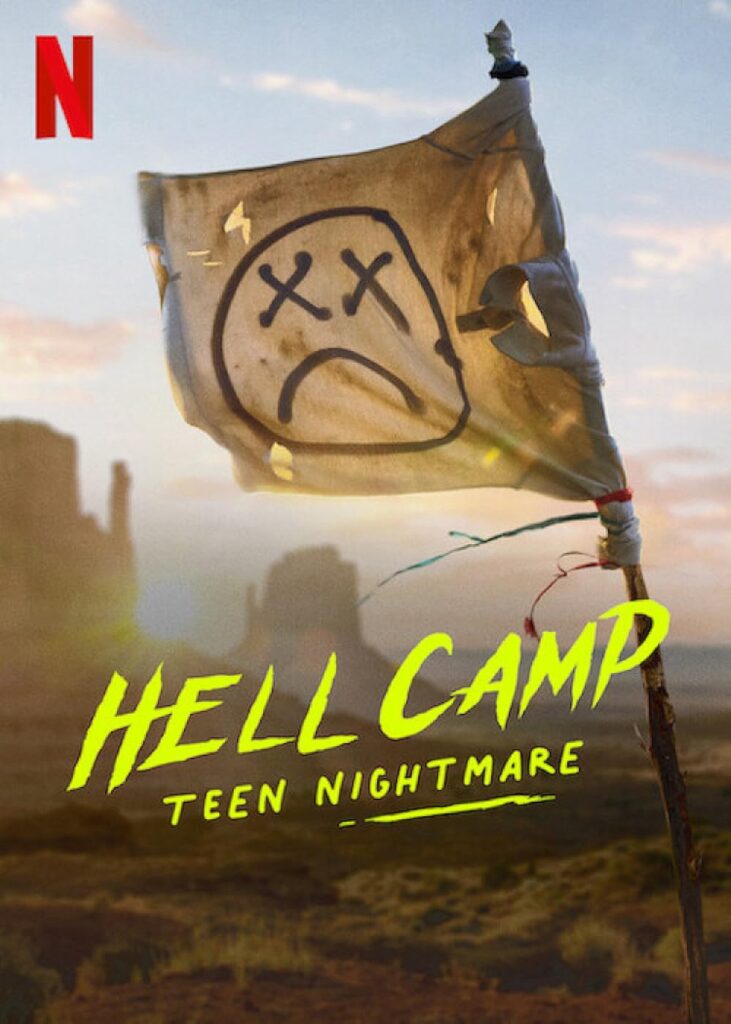
What happens when you mix Christianity, Indigenous cultural appropriation, family values (see also: Christianity), child abuse (see also: family values), colonial forms of masculinity (see also: Christianity, family values, and child abuse), and American entrepreneurialism? You get rich kids being sent to bootcamp in the desert where they are tortured into being better people! If they don’t die first! Hell Camp examines this trend which was largely created by Steve Cartisano in the late 1980s until the early 2000s. It’s pretty grim viewing. Cartisano got away with it, too, even though hundreds of kids were tortured, at least one kid died, and even though Cartisano personally sexually abused some very young teens. He died in 2019 of a reported heart attack but a lot of bootcamps based upon his model still exist today.
In one telling part of the film, we learn that Cartisano was, himself, a “troubled teen” who was “scared straight” when he was sent to bootcamp with the Airforce. In this regard, Cartisano is a classic example of the hardcore 12-stepper who believes that people have to be punished in order to change. These 12-steppers insist that punishments are “natural consequences” of the behaviour of the people being punished and that harm reduction approaches “enable addicts” to continue in their addition because they prevent people from experiencing “natural consequences.” Of course, there is nothing “natural” about a person being kicked out of a homeless shelter in the middle of winter because they drank a beer before returning to the shelter, and there is nothing natural about the punishments imposed on kids at Cartisano’s torture camps where they are (amongst other things) slapped, starved, tied to trees, dragged over rocks, forced to endure sleep deprivation, hog-tied, and half-drowned. Essentially, Hell Camp gives us a glimpse into the same ideology, practices, and outcomes that are present in every single Christian-faith-based, abstinence-based social service that claims to be helping fuck-ups become better people. Hell Camp isn’t just about Cartisano’s Challenger Foundation. It’s also about the Salvation Army shelter and the local Street Mission.